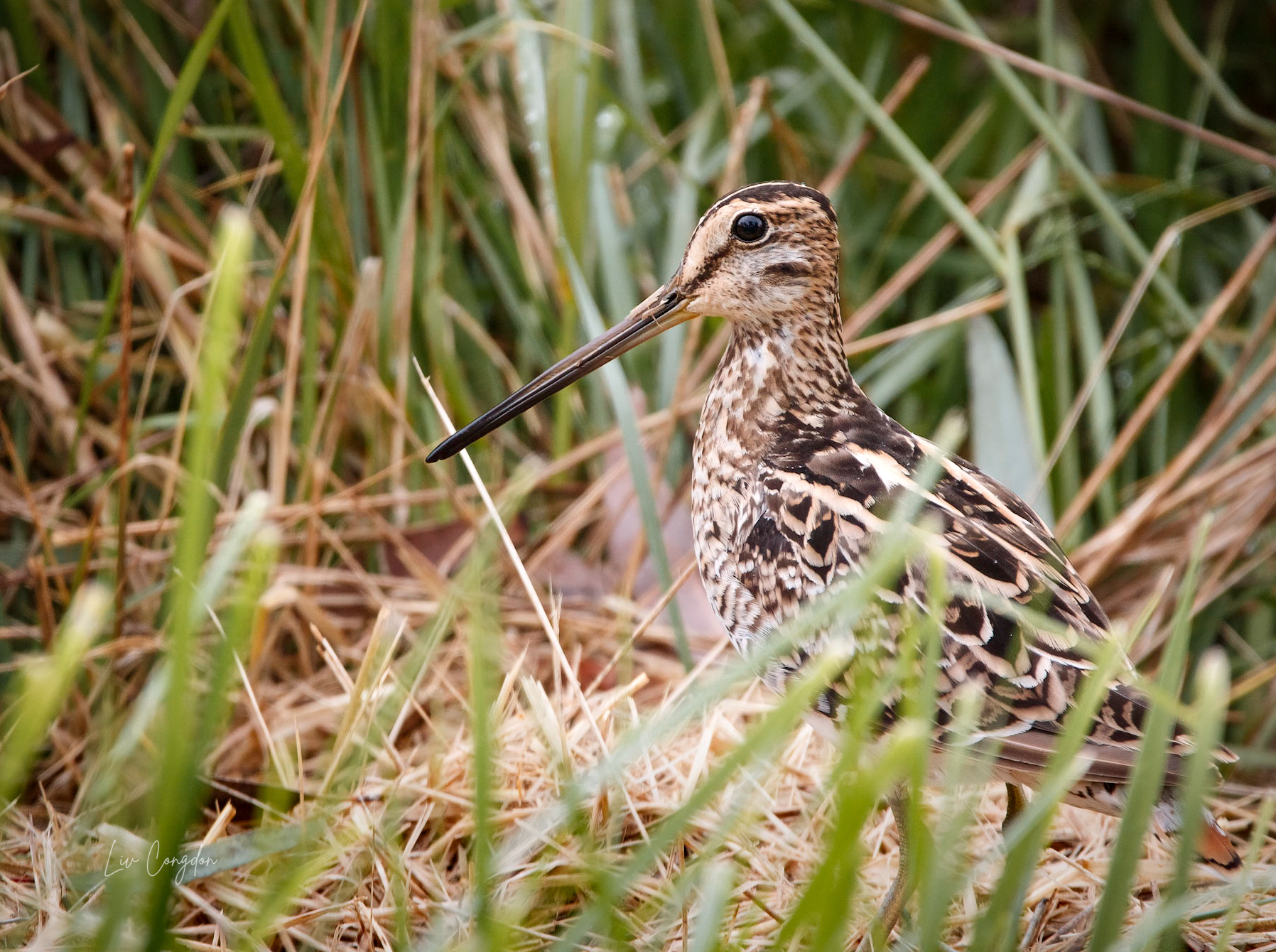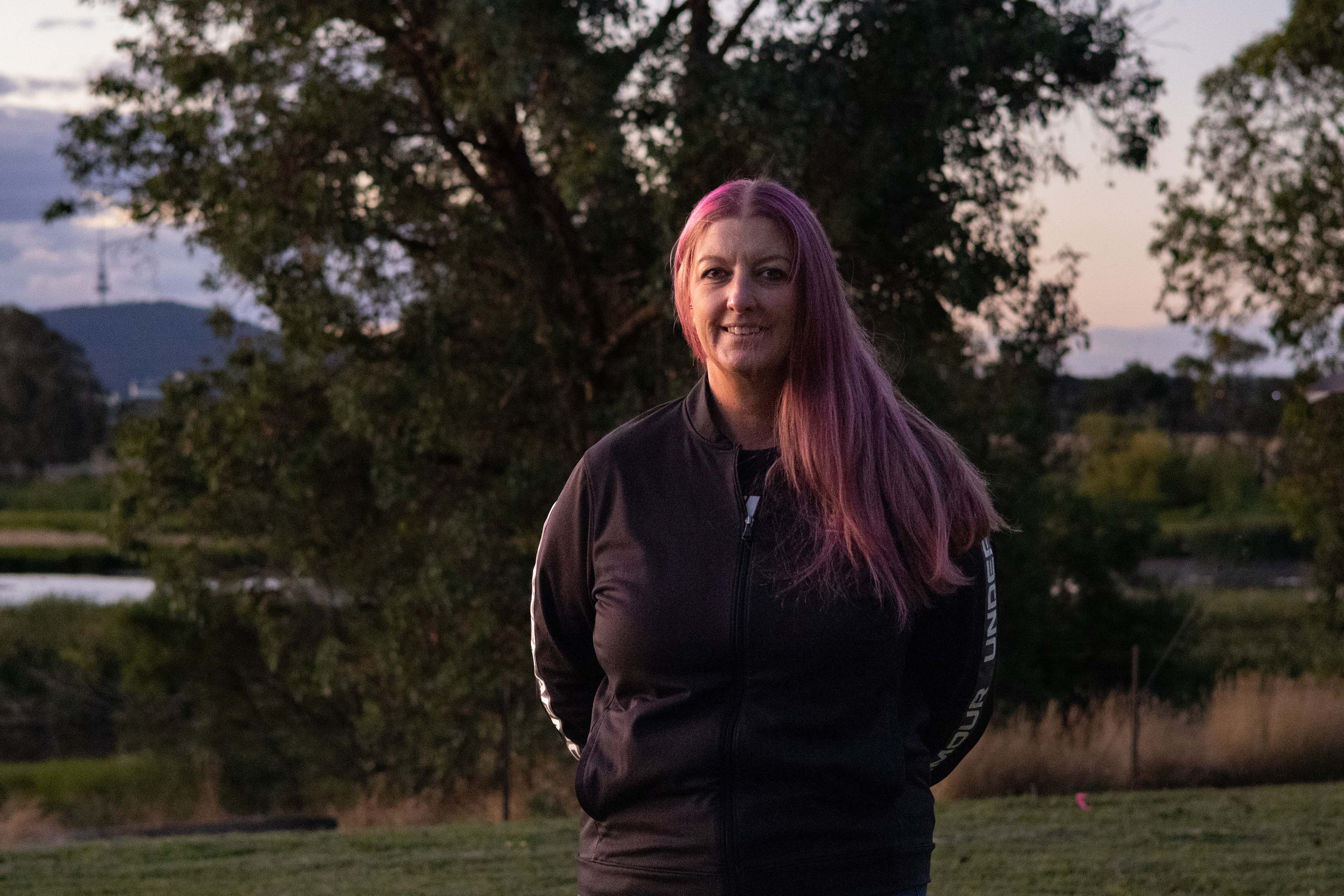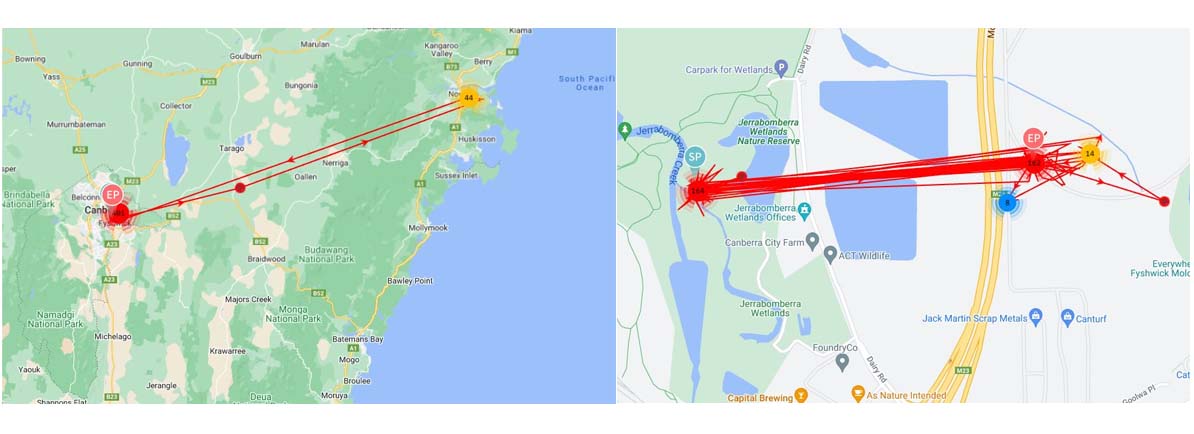
Slip into your waders, we’re off to catch Latham’s snipe
On a calm, summer evening, to the background of frog calls and buzzing mosquitoes, a group of volunteers and scientists don waders and sludge through the swamp to set out large nets. The bright lights from the car yard next door have been turned off. It must be as dark as possible for this mission to work.
Just after midnight, the crew returns to the demountable offices of the Jerrabomberra Wetlands in Canberra, where they camp in swags on the floor. They will arise before first light to “flush” the birds.
At 5.32am precisely, as the birds are returning from a night of feeding, the team emerges from their hiding spots in the reeds to flush the birds into the nets. A moment later, the sun peeks out over the line of gum trees bordering this urban oasis.
This scenario is what Lori Gould, an ANU PhD candidate who’s leading this mission, calls “textbook conditions” to catch and tag a migratory wading bird, called Latham’s snipe.
But sadly, the team have no luck with their first attempt in catching any snipe. Not content with a willy wagtail and a reed warbler as a consolation prize, they return to the offices to discuss strategy. This is not an unusual scenario – these birds are notoriously difficult to catch.
With wide black eyes, a comically long, thin beak and mottled-brown feathers, Latham’s snipe are a cute, but unassuming wading bird. Setting your eyes on a snipe in Australia can be tricky, as they lurk around the edges of the ponds, usually in the reeds where they are well-hidden from predators. But, at certain times of year, we know they are there.

Frequent flyers
The snipe arrive at Jerrabomberra Wetlands every spring on their long-haul migration from Japan or southern Russia. Living an eternal summer, they cross hemispheres twice a year to avoid the cold seasons. This journey is impressive, especially for a bird half the size of a magpie.
To determine exactly where the snipe go, Gould uses GPS tracking technology. The pressure is on to catch some snipe at the next attempt in order to deploy the last 13 out of 20 trackers planned for the 2022-23 season. It is a serious operation, albeit with lots of light-heartedness and laughter. Over one weekend at the wetlands, a mix of around thirty-five super-experienced and new, enthusiastic citizen scientists are involved in the catch. The posse includes fellow researchers, retired scientists, wetlands employees, local birdwatchers, members of the Young Rangers club and volunteers from the Japanese embassy.
You’ve got to really love snipe to want to help. And these people do really love snipe. Many volunteers return to the wetlands each season, just like the snipe themselves.
The group sit down over toast and cuppas to plan the next catch attempt. They know that Latham’s snipe roost during the day and then forage for food around dusk and dawn, dipping those long beaks into the mudflats to catch some grub.
Gould brings up satellite maps onto a big screen, so the team can see where the snipe are hanging out at the moment. Being a wet summer, the wetlands – and thus the snipes’ favourite spots – have changed since last year.
“This is the gauntlet,” she says while drawing a diagram of the new plan on a whiteboard to illustrate where the nets will go, and the direction each volunteer will need to come from.
With barely an ounce of sleep, the crew does it all again, as they spend another night working together to flush out the birds into awaiting nets. This time, they strike gold. The team assess, weigh, measure and tag a whopping 12 birds, before releasing them back to the wetland. This is the highest number of snipe ever caught in one catch in Canberra.
“The snipe-catching gods must be looking down on us,” says Gould.

Tracking birds over time
The Latham’s Snipe Project began in 2015 after some vital snipe habitat in Port Fairy, Victoria, was marked for development. Wader bird expert, Dr Birgita Hanson, now one of Gould’s PhD supervisors, started collecting data on snipe to provide evidence about the Port Fairy Latham’s snipe population. This data proved how reliant this species is on those Port Fairy wetlands, informing changes to housing development plans.
Around this time, Gould worked at the Jerrabomberra Wetlands in science and education. She contacted Dr Hanson for more information on this flagship species for the wetlands, and the project expanded to Canberra. After many years of working together on the Latham’s Snipe project, Gould says the opportunity to undertake a PhD through the ANU Fenner School of Environment and Society, and Federation University was exciting and timely, especially with Dr Hanson as one of the key supervisors.
This year the project is looking at local movements of snipe, instead of tracking their lengthy migration. New GPS Bluetooth devices are light, accurate and a lot cheaper than the previous satellite trackers, but the birds need to remain in the vicinity of a base station within Bluetooth range. This was a slightly risky choice, as the birds could fly away from the wetlands, but because of the previous tracking data the team made an educated guess that enough of the birds would remain.

Simply using an app associated with the tracking devices, Gould can see where each individual bird goes, as well as their level of activity, the temperature, light, speed and altitudes of their location. As it turned out, 18 birds remained at the wetlands and decent data was collected from 16 of these birds.
“This has been well beyond expectations!” Gould says.
Thanks to the new tech, Gould has produced detailed maps of the coming-and-goings of each snipe this season. Individual birds tend to create predictable daily routines in their movements, but every now and then you see a snipe pop up somewhere interesting, like the Bunnings carpark or Woolworths
On a hot day in February, one snipe, named Hiroyuki by the researchers, decided to embark on a little beach holiday, flying to Nowra on the South Coast, before heading back to the Jerrabomberra Wetlands a few days later.
“Hiroyuki means ‘extensive, good fortune, and spacious’ in Japanese,” Gould says. “We named her for the meaning ‘good fortune’ but now I am thinking spacious and extensive might be equally as appropriate.”

This year, Gould also amazingly recaptured a snipe sporting an orange leg flag that had been attached all the way back in 2018. This means that this bird is more than seven years old, and presumably has flown to Japan/Russia and back at least five times. That’s one loyal, well-travelled snipe.
Wild or not, wetlands need protecting
For such secretive birds, it may seem odd that they consistently choose these wetlands a short fifteen minutes from Canberra city centre, in view of the Parliament House flagpole, and where cyclists and walkers are a dime-a-dozen.
But open, urban wetlands and human-altered farmlands are the types of habitats that snipe thrive in, Gould says. This is why the problem of proposed development in their habitat keeps cropping up.
“They don't mind being on the fringes of urban areas. And similarly, cattle seem to muck up the ground quite nicely for them to feed in,” she says. In compiling and analysing this information she’s gathered from surveys, tracking data, and from community sightings, Gould will be able to tell a detailed story of the lesser-known habits and habitats of Latham’s snipe.
“I’m doing it because it is an opportunity to create something bigger” Gould says of her PhD. “In particular, creating guidelines for the protection and management of habitat for snipe.”
Knowledge is power when it comes to conservation. When pooled together with work from collaborators and communities across Australia and Japan, Gould’s research will provide better information for protecting Latham’s snipe, helping to safeguard valuable wetland ecosystems.
For Gould and the snipe-catchers it makes their work – all that wading and all that waiting – well worth it.



